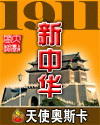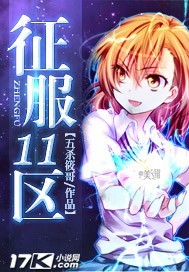11-a simplified alphabet-第1部分
按键盘上方向键 ← 或 → 可快速上下翻页,按键盘上的 Enter 键可回到本书目录页,按键盘上方向键 ↑ 可回到本页顶部!
————未阅读完?加入书签已便下次继续阅读!
A SIMPLIFIED ALPHABET
(This article; written during the autumn of 1899; was about
the last writing done by Mark Twain on any impersonal subject。)
I have had a kindly feeling; a friendly feeling; a cousinly
feeling toward Simplified Spelling; from the beginning of the
movement three years ago; but nothing more inflamed than that。
It seemed to me to merely propose to substitute one inadequacy
for another; a sort of patching and plugging poor old dental
relics with cement and gold and porcelain paste; what was really
needed was a new set of teeth。 That is to say; a new ALPHABET。
The heart of our trouble is with our foolish alphabet。 It
doesn't know how to spell; and can't be taught。 In this it is
like all other alphabets except onethe phonographic。 This is
the only competent alphabet in the world。 It can spell and
correctly pronounce any word in our language。
That admirable alphabet; that brilliant alphabet; that
inspired alphabet; can be learned in an hour or two。 In a week
the student can learn to write it with some little facility; and
to read it with considerable ease。 I know; for I saw it tried in
a public school in Nevada forty…five years ago; and was so
impressed by the incident that it has remained in my memory ever
since。
I wish we could adopt it in place of our present written
(and printed) character。 I mean SIMPLY the alphabet; simply the
consonants and the vowelsI don't mean any REDUCTIONS or
abbreviations of them; such as the shorthand writer uses in order
to get compression and speed。 No; I would SPELL EVERY WORD OUT。
I will insert the alphabet here as I find it in Burnz's
PHONIC SHORTHAND。 'Figure 1' It is arranged on the basis of
Isaac Pitman's PHONOGRAPHY。 Isaac Pitman was the originator and
father of scientific phonography。 It is used throughout the
globe。 It was a memorable invention。 He made it public seventy…
three years ago。 The firm of Isaac Pitman & Sons; New York;
still exists; and they continue the master's work。
What should we gain?
First of all; we could spell DEFINITELYand correctlyany
word you please; just by the SOUND of it。 We can't do that with
our present alphabet。 For instance; take a simple; every…day
word PHTHISIS。 If we tried to spell it by the sound of it; we
should make it TYSIS; and be laughed at by every educated person。
Secondly; we should gain in REDUCTION OF LABOR in writing。
Simplified Spelling makes valuable reductions in the case of
several hundred words; but the new spelling must be LEARNED。 You
can't spell them by the sound; you must get them out of the book。
But even if we knew the simplified form for every word in
the language; the phonographic alphabet would still beat the
Simplified Speller 〃hands down〃 in the important matter of
economy of labor。 I will illustrate:
PRESENT FORM: through; laugh; highland。
SIMPLIFIED FORM: thru; laff; hyland。
PHONOGRAPHIC FORM: 'Figure 2'
To write the word 〃through;〃 the pen has to make twenty…one strokes。
To write the word 〃thru;〃 then pen has to make twelve strokes
a good saving。
To write that same word with the phonographic alphabet; the
pen has to make only THREE strokes。
To write the word 〃laugh;〃 the pen has to make FOURTEEN
strokes。
To write 〃laff;〃 the pen has to make the SAME NUMBER of
strokesno labor is saved to the penman。
To write the same word with the phonographic alphabet; the
pen has to make only THREE strokes。
To write the word 〃highland;〃 the pen has to make twenty…two
strokes。
To write 〃hyland;〃 the pen has to make eighteen strokes。
To write that word with the phonographic alphabet; the pen
has to make only FIVE strokes。 'Figure 3'
To write the words 〃phonographic alphabet;〃 the pen has to
make fifty…three strokes。
To write 〃fonografic alfabet;〃 the pen has to make fifty strokes。
To the penman; the saving in labor is insignificant。
To write that word (with vowels) with the phonographic
alphabet; the pen has to make only SEVENTEEN strokes。
Without the vowels; only THIRTEEN strokes。 'Figure 4' The
vowels are hardly necessary; this time。
We make five pen…strokes in writing an m。 Thus: 'Figure 5'
a stroke down; a stroke up; a second stroke down; a second stroke
up; a final stroke down。 Total; five。 The phonographic alphabet
accomplishes the m with a single strokea curve; like a
parenthesis that has come home drunk and has fallen face down
right at the front door where everybody that goes along will see
him and say; Alas!
When our written m is not the end of a word; but is
otherwise located; it has to be connected with the next letter;
and that requires another pen…stroke; making six in all; before
you get rid of that m。 But never mind about the connecting
strokeslet them go。 Without counting them; the twenty…six
letters of our alphabet consumed about eighty pen…strokes for
their constructionabout three pen…strokes per letter。
It is THREE TIMES THE NUMBER required by the phonographic
alphabet。 It requires but ONE stroke for each letter。
My writing…gait iswell; I don't know what it is; but I
will time myself and see。 Result: it is twenty…four words per
minute。 I don't mean composing; I mean COPYING。 There isn't any
definite composing…gait。
Very well; my copying…gait is 1;440 words per hoursay
1;500。 If I could use the phonographic character with facility I
could do the 1;500 in twenty minutes。 I could do nine hours'
copying in three hours; I could do three years' copying in one
year。 Also; if I had a typewriting machine with the phonographic
alphabet on itoh; the miracles I could do!
I am not pretending to write that character well。 I have
never had a lesson; and I am copying the letters from the book。
But I can accomplish my desire; at any rate; which is; to make
the reader get a good and clear idea of the advantage it would be
to us if we could discard our present alphabet and put this
better one in its placeusing it in books; newspapers; with the
typewriter; and with the pen。
'Figure 6' MAN DOG HORSE。 I think it is graceful and
would look comely in print。 And consideronce more; I begwhat
a labor…saver it is! Ten pen…strokes with the one system to
convey those three words above; and thirty…three by the other!
'Figure 6' I mean; in SOME ways; not in all。 I suppose I might
go so far as to say in most ways; and be within the facts; but
never mind; let it go at SOME。 One of the ways in which it
exercises this birthright isas I thinkcontinuing to use our
laughable alphabet these seventy…three years while there was a
rational one at hand; to be had for the taking。
It has taken five hundred years to simplify some of
Chaucer's rotten spellingif I may be allowed to use to frank a
term as thatand it will take five hundred years more to get our
exasperating new Simplified Corruptions accepted and running
smoothly。 And we sha'n't be any better off then than we are now;
for in that day we shall still have the privilege the Simplifiers
are exercising now: ANYBODY can change the spelling that wants
to。
BUT YOU CAN'T CHANGE THE PHONOGRAPHIC SPELLING; THERE ISN'T
ANY WAY。 It will always follow the SOUND。 If you want to change
the spelling; you have to change the sound first。
Mind; I myself am a Simplified Speller; I belong to that
unhappy guild that is patiently and hopefully trying to reform
our drunken old alphabet by reducing his whiskey。 Well; it will
improve him。 When they get through and have reformed him all
they can by their system he will be only HALF drunk。 Above that
condition their system can never lift him。 There is no
competent; and lasting; and real reform for him but to take away
his whiskey entirely; and fill up his jug with Pitman's wholesome
and undiseased alphabet。
One great drawback to Simplified Spelling is; that in print
a simplified word looks so like the very nation! and when you
bunch a whole squadron of the Simplified together the spectacle
is very nearly unendurable。
The da ma ov koars kum when the publik ma be expektd to get
rekonsyled to the bezair asspekt of the Simplified Kombynashuns;
butif I may be allowed the expressionis it worth the wasted
time? 'Figure 7'
To see our letters put together in ways to which we are not accustomed
offends the eye; and also takes the EXPRESSION out of the words。
La on; Makduf; and damd be he hoo furst krys hold; enuf!
It doesn't thrill you as it used to do。 The simplifications
have sucked the thrill all out of it。
But a written character with which we are NOT ACQUAINTED
does not offend usGreek; Hebrew; Russian; Arabic; and the
othersthey have an interesting look; and we see beauty in them;
too。 And this is true of hieroglyphics; as well。 There is
something pleasant and engaging about the mathematical signs when
we do not understand them。 The mystery hidden in these things
has a fascination for us: we can't come across a printed page of
shorthand without being impressed by it and wishing we could read
it。
Very well; what I am offering for acceptance and adopting is
not shorthand; but longhand; written with the SHORTHAND ALPHABET
UNREACHED。 You can write three times as many words in a minute
with it as you can write with our alphabet。 And so; in a way; it
IS properly a shorthand。 It has a pleasant look; too; a
beguiling look; an inviting look。 I will write something in it;
in my rude and untaught way: 'Figure 8'
Even when _I_ do it it comes out prettier than it does in
Simplified Spelling。 Yes; and in the Simplified it costs one
hundred and twenty…three pen…strokes to write it; whereas in the
phonographic it costs only twenty…nine。
'Figure 9' is probably 'Figure 10'。
Let us hope so; anyway。





![[hp]two snape封面](http://www.baxi2.com/cover/21/21716.jpg)